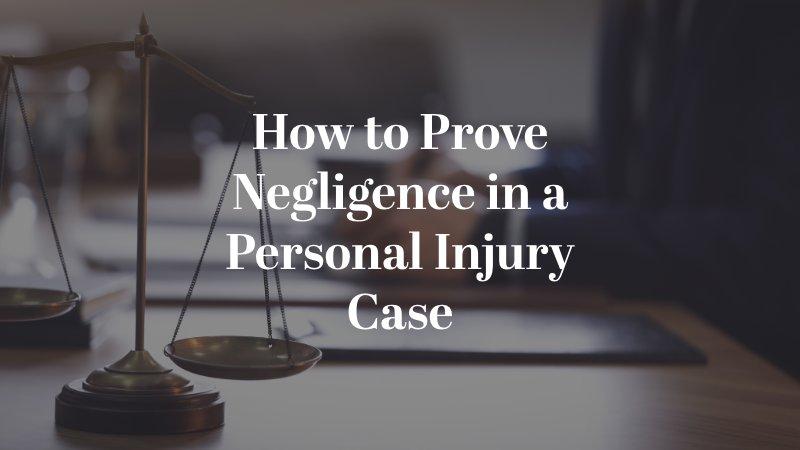Most Denver personal injury cases are based on the legal concept of negligence. A successful negligence claim establishes four legal elements: duty of care, breach of duty, causation, and duty.
Knowing how to prove these elements is vital to pursuing your legal claim.

Duty of Care
The duty of care is the legal responsibility one party has toward another. Various duties of care can apply.
For example, all motorists have a legal responsibility to obey the law and avoid causing accidents. Property owners owe a duty of care to visitors to maintain their properties to avoid injuring them. Medical professionals owe a duty to provide their patients with a standard of care that is accepted in the community.
When there is no specific law or standard, the reasonable person standard is used, which determines what a reasonably prudent person would have done under similar circumstances.
Evidence of the duty of care may include:
- Rules of the road
- Other laws and statutes
- Evidence of what a reasonable person would do under similar circumstances
Breach of Duty
Next, you must show that the defendant breached their duty of care. This is something they did or didn’t do that violated their legal duty. For example:
- A motorist was speeding.
- A property owner failed to warn visitors of slippery floors.
- A medical provider deviated from the standard of care.
Evidence to prove a breach of duty may be similar to that necessary to show causation.
Causation
You must show that the breach of duty is what directly and legally caused the accident. Evidence could include:
- Accident reports prepared by law enforcement or other objective parties that pinpoint how the accident happened
- Statements from the defendant admitting fault
- Videos of the accident
- Photos of the accident scene
- Physical evidence, such as skid marks and road debris
- Reports from accident reconstruction experts
- Tickets for traffic violations
- Statements from witnesses
- Cell phone records
- Employment and personnel records
An experienced personal injury lawyer can help you gather this evidence.
Damages
Finally, you must prove you suffered damages. Even if you can prove that the defendant had a duty of care and caused the accident by breaching that duty, this is not enough. You must show that you suffered harm as a result of the accident. Your damages and evidence of them might include:
- Medical expenses: Bills, medical records, doctor’s notes regarding your prognosis, testimony from medical experts
- Lost wages: Pay stubs, a letter from your employer, and your tax returns
- Diminished earning capacity: Analysis from vocational experts comparing your pre- and post-accident projected earnings
- Property damage: Repair estimates and reports
- Pain and suffering: Journal entries regarding your daily symptoms and pain and statements from friends and loved ones
Contact Our Dedicated Personal Injury Lawyers for Legal Advice and Assistance
If you were injured in an accident caused by someone else’s negligence, the personal injury team at Dulin McQuinn Young can help. We can investigate your case, determine how the accident happened, and gather the evidence necessary to establish negligence.
Contact us today for your free consultation.